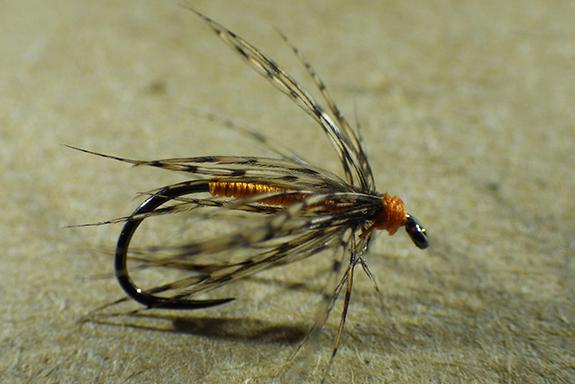Subhead
If you believe there are traditions in fishing, certainly those associated with fly fishing come to mind, especially fly fishing for trout. Recently I had became aware of a tradition that is 150 years of age this summer and was further associated with a tradition dating back even further to the early 1700’s. I fished with Stephen Wilson, of the Appletreewick, Barden and Burnsall Angling Club, that celebrates 150 years as a fishing club and caretakers of the River Wharfe in the Yorkshire Dales of northern England. As its tradition, the club claims the origination of a 300 year old style of fly design known as North Country Spiders (NCS). In the US, we refer to them as soft hackles flies. The use of NCS continues to this day across the British Isles and in this country.
For a tradition to withstand the effects of time, it must possess enduring benefits that competing fly designs and methods of fishing could not exceed or at best achieve a parity position. It is reasonable to believe the initial success of NCS was based on readily available materials and a simple design pattern skilled fishers could construct without the use of tools we use today.
Fishing and hunting were means of gathering food in past centuries, thereby wild game birds provided the feathers that were the main ingredients of NCS patterns. Partridge, waterhens, snipe, starling, peacock, other upland and waterfowl and in some cases domesticated foul were common feather sources. The other two materials that comprised this simple design were the hook and silk thread. A simple design of three components and exemplary of one of the most famous of spiders, is the Partridge and Orange.
The North Country Partridge and Orange is made from brown tinted bared feathers situated between the wings of the Hungarian partridge’s back, the silk is orange and hook is a wide gape light wire hook of sizes 10 – 16. The feather is wrapped around the hook near the eye in a manner that separates and spirals an array of long and flexible fibers that are secured by silk thread. The silk thread wraps a portion of the hook shank to provide color. These simple materials, held in-hand and with fingers wrapped and secured with a knotted silk thread, have been fished for centuries.
The method of fishing is simple as well and most commonly accomplished by casting line and long leader upstream a distance of 25 or so feet. The fisher swims the flies downstream at river speed, while gradually lifting the rod tip and near the end of the drift, makes a final lift and steps forward into the next upstream cast. The fly, designed to float within the surface film or just below it, simulates a trapped or dead mayfly, caddisfly or stonefly that failed to successfully emerge from the river. Feather fibers animate in the current like legs and wings attracting trout seeking an easy meal.
Fly fishing in this manner, while being simple and effective, has been foundational to the innovative fisher for centuries. Additional materials have been added in the form of partridge blended with peacock herl, mallard primary feathers as up-right wings, water-rat fur body dubbing, wire wrapped over a purple silk thread body and numerous other ingredients.
Casting across and downstream accompanied the usual upstream approach with complimentary fly pattern design up-grades. Technologies advancing choices of fly rod, reel and line and tying materials left their mark, perhaps making fly fishing easier, but fundamentally North Country Spiders and means of fishing remain unchanged … unchanged as the pleasure of a caught trout.
I wonder, when considering fly fishing culture in the British Isles, what are the current and emerging traditions to be found within the fly fishing culture of Central Wisconsin. Perhaps it is the June Hex hatch and accompanying local fly patterns that will leave their mark over decades to come.
Image


